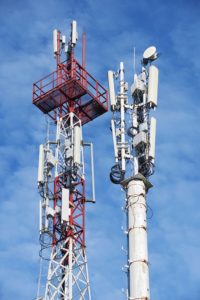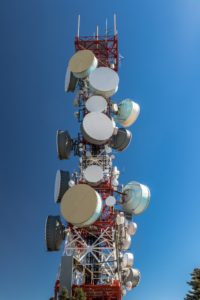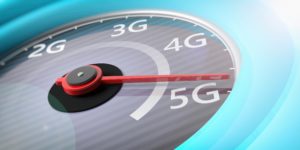Are Radiofrequency EMFs the Price of Progress?

Cellphones have greatly evolved over the past 20 years. In 2000, there was the Nokia phone which could only make calls. Then, the revolutionary flip phone, with its camera and T9 texting capabilities arrived. Next came the sleeker designs like the Razr, Sidekick, and the slider cellphone-mp3 hybrid called Chocolate. And, let’s not forget the Blackberry, with its primitive touchscreen and QWERTY keyboard. Then, in 2007, the first iPhone was released, with the assurance that it was “only the beginning” of Apple’s dream to reinvent the cellular phone. And it was. It was also the beginning of an alarming rise of Radiofrequency (RF) EMFs.
Over the next few years, Apple, and all the companies that followed, began creating phones and software systems that would assist and complement an individual’s busy day-to-day lifestyle. Phones now had the capabilities of computers-but were convenient enough to fit in the palm of your hand, and double as a communication device. They could access the internet, check your email, download and upload files, play videos and take pictures. There were also an array of games to be played. But, it all came at a price.

In 2010, 4G/LTE was launched in the U.S., with the promise that wireless connections between your phone and the data cloud would be faster. It allowed for better internet connections, speedier downloads, hi-def mobile TV, video conferencing, and 3D television. However, to include as many citizens in this technological advancement, more cell sites on towers and small cell sites to boost signals were erected. These towers and cell sites created radiation hotspots, and consequently, an increased potential health risk for people across the country.
Cell Towers and Cell Sites
While there are different types of cell towers, the basic structure consists, of a long, tall pole mounted with “cell sites”. Cell sites are the antennas and equipment such as: transmitters, receivers, GPS, and backup power sources that transmit the cell phone signals. Cell towers, also referred to as “macrocell towers”, can emit signals up to 25 miles from where they are placed[1].
Cell sites are the antennas and equipment such as: transmitters, receivers, GPS, and backup power sources that transmit the cell phone signals. Cell towers, also referred to as “macrocell towers”, can emit signals up to 25 miles from where they are placed[1].

When making a call on your cellular device, your phone emits electromagnetic radio waves, also known as RF (radio frequency) Radiation, to the nearest cell tower. The cell site on the tower receives the signal and sends one of its own to a switching center, which connects you to the phone you’re calling. This process also happens while on a call, sending text messages, accessing the internet, downloading or uploading files, streaming videos, and every time you get an app notification on your phone.
Small cell sites are the same as the cell sites on cell towers. They are comprised of antennas and communication equipment, and they emit and receive signals through RF radiation. The only difference between the two is size. The antennas and equipment are smaller, more discreet, and can be placed on roofs, sides of buildings, streetlights, and traffic lights.
Small cell sites are meant to help stretch the reach of macrocell towers, especially in densely populated areas, where more people are simultaneously using wireless devices at any given time- like cities. Small cell sites however, have a considerably shorter range than the macrocell towers, therefore, they’re placed every few blocks.
So, what’s the big deal? And, why should you be concerned?
RF Radiation Health Risks
RF radiation is given off from most, if not all, wireless devices including: cellphones, laptops, Wi-Fi, Bluetooth devices, smart meters, and more. And, while the frequencies RF radiation produces is relatively low, the danger of constant exposure has been shown to result in undesirable biological health effects[2]. DNA damage, oxidative stress, cancer, brain damage, behavioral disorders, and reproduction system damage have also been linked to RF radiation[3].

In 2018, a study was conducted at two schools located within 200m of a cell tower. Over the course of two years, they monitored a group of adolescents (ages 13-16) at each school. The students were exposed to radiation 6 hours a day, 5 days a week. In the end, it was noted that there was a significant decrease in motor and spatial memory skills[4].
Another study took 80 people who lived near a cell tower and recorded how their health was effected. 23.5% complained of headaches. 28.2% had memory changes and 21.7% had depressive symptoms. Dizziness, tremors, and sleep disturbances were also common[5].
The Push for 5G

Right now, cellular carriers are aggressively advertising and pushing for consumers to invest in 5G technologies. Claimed to be the fastest wireless technology, it promises to take us to the next level of SMART devices, like driverless cars. 5G is already available in many cities across the U.S. But its efficiency depends on small cell sites. 5G only transmits a couple of hundred feet. So, more cell sites must be installed within a few thousand feet of each other, to better meet the demand of the population. This means even more radiation.
By the end of 2016, there were over 300,000 cell sites in the U.S.[6] In 2017, Verizon stated that, “62% of Verizon’s wireless deployments were small cells,” which is “a figure that will only grow larger as we deploy 5G in 2018 and beyond.”[7] And in 2018, the CTIA (Cellular Telecommunications Industry Association), predicted that by 2026, 800,000 cell sites will be deployed[8]. That’s a lot of RF Radiation!
So what can you do to protect yourself?
Keeping Yourself Safe
Here are some tips for keeping yourself and your loved ones safe from cellular towers and the rise of 5G.
- Limit how much time you spend on your cellphone. Between the signals your phone is sending out and the screen’s blue light attacking your eyes, your body is absorbing lots of radiation. Many people today, have long since gotten rid of their landline phones. But if you still have one, use it! If not, consider getting a protective case to use it more safely.
- Invest in air-tube headsets for your phone. Holding your mobile device to your head, puts your brain more at risk for damage from radiation. Children are especially sensitive. Studies have shown that a child’s brain is even more vulnerable to RF Radiation than an adult’s.
- Put your phone in Airplane Mode as much as possible. This will minimize the amount of “communication” between your phone and a cell tower.
- Do your research! The findings linking radiation and health issues are compelling. Also, spend time looking into other protective products that will shield or limit the amount of radiation bombarding your body.
We’ve come a long way in 20 years, and the promise of even more impressive technology is exciting. The price of progress, however, shouldn’t be our health or well-being. Fortunately, some lifestyle changes and EMF protecting strategies should enable us to enjoy the benefits of technological gains without falling prey to the risks. Remember, small changes make a big difference.
SUGGESTED PRODUCTS:
 EMF PROTECTIVE AIRTUBE HEADSET
EMF PROTECTIVE AIRTUBE HEADSET
[1]Steel In the Air:Cell Site Types https://www.steelintheair.com/cell-site-types/
[2]Risks to Health and Well-Being From Radio Frequency Radiation Emitted by Cell Phones and Other Wireless Devices https://www.ncbi.nlm.nih.gov/pmc/articles/PMC6701402/
[3] Effects of electromagnetic fields exposure on the antioxidant defense system https://www.ncbi.nlm.nih.gov/pmc/articles/PMC6025786/
[4] Mobile Phone Base Station Tower Settings Adjacent to School Buildings: Impact on Students’ Cognitive Health https://www.ncbi.nlm.nih.gov/pmc/articles/PMC6775553/
[5]Neurobehavioral effects among inhabitants around mobile phone base stations. https://www.ncbi.nlm.nih.gov/pubmed/16962663/
[6] CTIA: State of Wireless 2017 https://api.ctia.org/docs/default-source/default-document-library/ctia-wireless-snapshot.pdf
[7] Verizon; Around 62% of all deployments in 2017 were small cell sites https://www.fiercewireless.com/wireless/verizon-around-62-all-wireless-deployments-2017-were-small-cells
[8] CTIA: State of Wireless 2018 https://api.ctia.org/wp-content/uploads/2018/07/CTIA_State-of-Wireless-2018_0710.pdf

